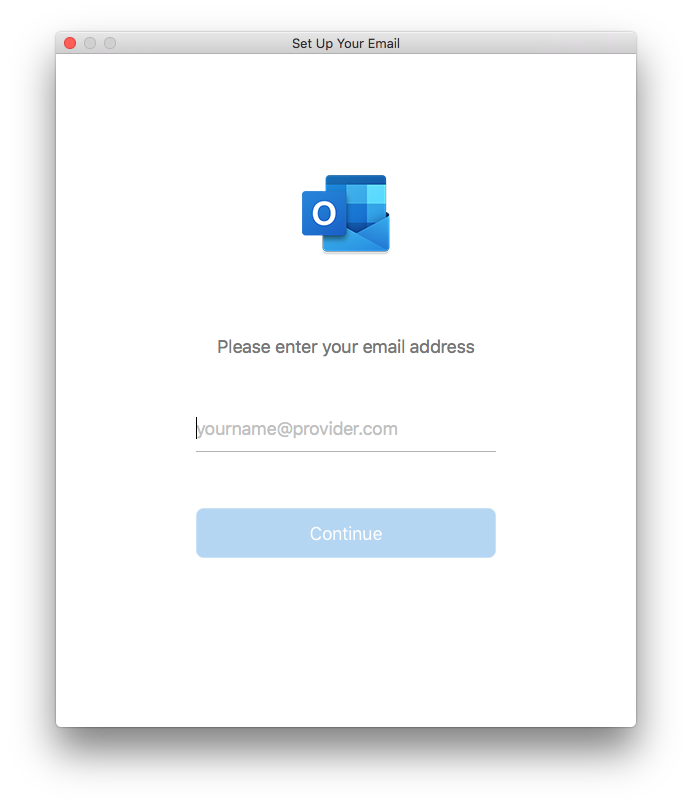
- #HOW TO CONNECT OUTLOOK 2016 TO EXCHANGE 2013 CONTACTS HOW TO#
- #HOW TO CONNECT OUTLOOK 2016 TO EXCHANGE 2013 CONTACTS UPDATE#
- #HOW TO CONNECT OUTLOOK 2016 TO EXCHANGE 2013 CONTACTS MANUAL#
Then select the Autodiscover key and at the right pane create the following values: Right click on Outlook key and create a New Key with name: AutoDiscoverģ.

Change the "RedirectUrl" with your company's Autodiscover URL.Ĥ. Open Notepad and copy-paste the following text:ģ. On the root folder of drive C:, create a folder and name it: AutodiscoverĢ. * Note: If cannot see this webpage, then contact the company's Administrator to find out the AutoDiscover URL address. If after login, you see a webpage like in the screenshot below, (with 'ErrorCode'= 600 and 'Message'= Invalid Request, then the Autodiscovery service is successfully configured. Navigate and try to login with user’s credentials to one of the following URL’s: The Autodiscover service is configured on the Exchange Server and the Autodiscover URL has been published. * Note: Change the “ ” with your company's domain name or OWA Web Address.Ģ.

The user has already access to the company’s email through OWA.
#HOW TO CONNECT OUTLOOK 2016 TO EXCHANGE 2013 CONTACTS HOW TO#
How to Manually Configure Exchange in Outlook 2016/2019/365 with Autodiscover.xml.īefore you continue to add the Exchange account in Outlook by using the steps below, make sure that:ġ. So, in this tutorial you’ll find detailed instructions on how to configure Outlook 2016/2019 or 365 with Exchange, by using a Local XML file (aka "autodiscover.xml"). In Outlook 2016/2019 or 365, the only way to manually setup an Exchange account is by using a local configuration file in XML format, with all the information needed to connect Outlook to the Exchange server.
#HOW TO CONNECT OUTLOOK 2016 TO EXCHANGE 2013 CONTACTS MANUAL#
In the latest Outlook versions (2016/2019 or 365) this option is missing (the manual setup is not supported), and many users face problems to setup Outlook with Exchange, especially if needed to specify a URL to connect to a proxy server for Exchange. This wasn’t a total surprise considering that support for Outlook 2007 itself stopped on Octoalready.In previous Outlook versions (Outlook 2007, 2010 & 2013) you have the option to manually setup and configure an Exchange Account. However, as of October 31, 2017, Office 365 dropped support for Outlook 2007 as well. The only exception to this was when you were connecting to an Office 365 Exchange 2016 server. Exchange versions and Outlook supportĮxchange support works in the same way, so Exchange 2016 will no longer support Outlook 2007. Proper configuration of the Autodiscover and Outlook Anywhere service can be tested via the Microsoft Remote Connectivity Analyzer.įor more information about configuring the Autodiscover and Outlook Anywhere service see: Autodiscover: Some quick methods to get it working. When Auto Account Setup fails, contact your Exchange administrator as it would indicate a configuration issue with the Autodiscover service in the Exchange environment.
#HOW TO CONNECT OUTLOOK 2016 TO EXCHANGE 2013 CONTACTS UPDATE#
Instead of using the manual configuration use the Auto Account Setup wizard.ĭepending on your Update Channel of Office, you either only have to fill out your email address or need to provide your name, email address and password and your Exchange account will be automatically configured by the settings that are being pushed from the Autodiscover service of Exchange.ĭon’t make it any harder for yourself than needed The new Add Account dialog only requires your to fill out the email address of the account you want to add.Įven in the old Auto Account Setup dialog, you are only really required to fill out your email address to add an Exchange account. This was a legacy configuration screen that was only needed for Exchange 2003 and previous and didn’t really serve a purpose anymore for later versions of Exchange. The option to manually configure an Exchange account has been removed in Outlook 2016. Note: To determine your current version of Exchange from within Outlook see: Which Exchange version am I using? Configuring an Exchange account in Outlook 2016



 0 kommentar(er)
0 kommentar(er)
